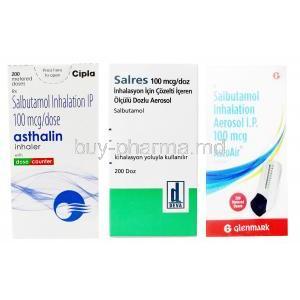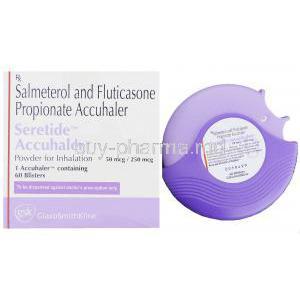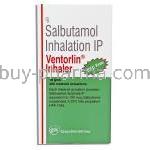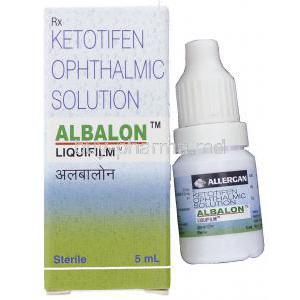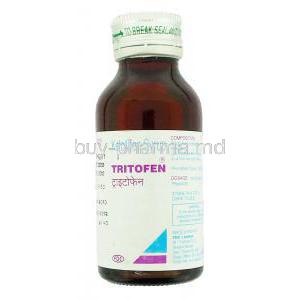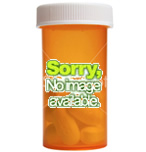Introduction to Bricanyl (Terbutaline)
Overview of Bricanyl and its Therapeutic Role
Bricanyl, known scientifically as terbutaline sulfate, is a potent bronchodilator designed to alleviate constriction of the airways. By targeting the respiratory tract, it provides rapid relief from wheezing, breathlessness, and chest tightness. This medication has become a cornerstone therapy for individuals suffering from chronic respiratory conditions where smooth airflow is compromised.
Brief History and Development of Terbutaline
Terbutaline emerged during the latter half of the 20th century as part of a new generation of selective β2-agonists. Its development was driven by the need for safer and more targeted alternatives to older non-selective adrenergic drugs. Over the decades, terbutaline has earned recognition for its versatility, both in acute emergencies and long-term management of respiratory ailments.
Drug Classification: β2-Adrenergic Receptor Agonist
Classified as a β2-adrenergic receptor agonist, terbutaline binds specifically to β2-receptors located predominantly in bronchial smooth muscle. This selectivity minimizes unwanted cardiovascular effects seen with non-selective agents, offering a safer profile for patients requiring repeated administration.
Clinical Significance in Modern Medicine
Today, terbutaline continues to hold significant therapeutic importance. It is prescribed globally for asthma, COPD, and acute bronchospasm, while also finding use in hospital settings for emergencies. Its inclusion in both oral and inhaled formulations provides flexibility, ensuring accessibility to patients with varying clinical needs.
Composition and Formulations
Active Ingredient: Terbutaline Sulfate
The central component of Bricanyl is terbutaline sulfate, a crystalline compound with powerful β2-agonist activity. It is the pharmacologically active agent responsible for bronchodilation.
Available Formulations: Tablets, Inhalers, Nebulizer Solution, Injections
- Tablets: For systemic and long-term control of symptoms.
- Inhalers: Provide rapid, localized relief directly into the lungs.
- Nebulizer solution: Used in severe cases, especially in pediatric or elderly patients.
- Injectable form: Reserved for acute emergencies such as severe asthma attacks.
Inactive Ingredients and Excipients
Formulations may include excipients such as lactose, microcrystalline cellulose, or stabilizers, ensuring stability, shelf life, and palatability of the medicine.
Brand Names and Generic Equivalents
Bricanyl is the well-known brand name; however, terbutaline sulfate is also available under numerous generic variants. The availability of generics widens access, making it affordable for patients worldwide.
Mechanism of Action: How Terbutaline Works
β2-Adrenergic Receptor Stimulation
Terbutaline exerts its effect by binding to β2-adrenergic receptors on airway smooth muscle. This stimulation activates adenylate cyclase, increasing cyclic AMP (cAMP) levels and initiating a cascade that relaxes muscle fibers.
Bronchodilation and Smooth Muscle Relaxation
The primary outcome is bronchodilation, which eases airflow through the respiratory tract. This relaxation reduces wheezing, improves oxygen exchange, and restores normal breathing patterns.
Onset and Duration of Action
Terbutaline inhalation acts within minutes, making it suitable for acute episodes. Oral formulations may take longer to act but provide extended relief. The duration generally ranges from 3 to 6 hours, depending on the route of administration.
Pharmacokinetics and Metabolism
Absorbed rapidly after oral administration, terbutaline undergoes minimal hepatic metabolism and is largely excreted unchanged in urine. Its pharmacokinetics contribute to a predictable and reliable therapeutic effect.
Comparison with Other Bronchodilators (e.g., Salbutamol)
Compared with salbutamol, terbutaline shares a similar mechanism but differs in onset and duration in some formulations. Both remain essential drugs in asthma and COPD care, with clinicians choosing based on patient-specific response.
Approved Medical Uses of Bricanyl
Asthma Management and Prevention of Bronchospasm
Terbutaline is frequently prescribed to manage and prevent asthma symptoms. It helps patients maintain an open airway, preventing night-time and exercise-induced episodes of breathlessness.
Chronic Obstructive Pulmonary Disease (COPD) Treatment
In COPD, airflow limitation is progressive. Bricanyl alleviates symptoms by dilating narrowed bronchi, improving quality of life, and reducing exacerbations when used in conjunction with other therapies.
Relief of Exercise-Induced Bronchoconstriction
Athletes and individuals prone to exercise-induced bronchospasm benefit from inhaled terbutaline prior to activity. This prophylactic use helps maintain peak performance and prevents activity-related breathing difficulties.
Acute Severe Asthma (Status Asthmaticus) in Emergency Care
In hospital settings, injectable terbutaline is reserved for life-threatening situations. It provides rapid reversal of airway constriction, often administered alongside corticosteroids and oxygen therapy.
Off-Label Uses of Terbutaline
Management of Preterm Labor (Tocolytic Use)
One of the most recognized off-label uses is as a tocolytic agent. Terbutaline relaxes uterine smooth muscle, delaying premature labor and allowing additional time for fetal lung maturation with corticosteroid therapy.
Treatment of Bronchitis and Other Respiratory Conditions
Although not officially approved, clinicians may prescribe terbutaline for acute bronchitis or other respiratory infections accompanied by bronchospasm. This provides symptomatic relief while primary infections are treated.
Potential Role in Allergic Reactions and Anaphylaxis Adjunct Therapy
In rare cases, terbutaline has been considered as an adjunct for allergic reactions, particularly when bronchospasm is a major component. While epinephrine remains the gold standard, terbutaline may serve as supportive therapy.
Dosage and Administration Guidelines
Standard Dosing for Adults
For adults, Bricanyl (terbutaline) is typically administered in doses that provide rapid bronchodilation while minimizing systemic side effects. Oral tablets are often prescribed at 2.5 mg to 5 mg taken up to three times daily, depending on symptom severity. Inhaled formulations deliver a faster response, usually one inhalation as needed, with a maximum limit to prevent excessive stimulation of the cardiovascular system.
Pediatric Dosing Protocols
Children require tailored dosing to account for body weight and metabolic differences. Pediatric doses are commonly lower, such as 0.05 mg/kg per oral dose, administered two to three times daily. For nebulized therapy, weight-based solutions are preferred under medical supervision. Safety monitoring is essential due to the heightened sensitivity of younger patients.
Inhaler Usage Technique and Nebulizer Instructions
- Shake the inhaler well before each use.
- Exhale fully, then place the mouthpiece securely between the lips.
- Inhale deeply while pressing down on the canister, ensuring full delivery.
- Hold breath for several seconds to maximize drug absorption.
Nebulizer use requires diluting the solution in sterile saline, followed by administration over 10–15 minutes using a face mask or mouthpiece. Proper cleaning of equipment prevents microbial contamination.
Oral vs. Parenteral Administration
Oral tablets provide systemic effects with slower onset, suitable for long-term control. Inhaled and nebulized routes act rapidly on airway smooth muscle, making them ideal for acute bronchospasm. Injectable terbutaline is reserved for severe or life-threatening exacerbations, typically given subcutaneously in emergency departments.
Dosage Adjustments in Renal or Hepatic Impairment
Patients with reduced renal or hepatic function may exhibit altered drug clearance. Dose reduction or extended dosing intervals are recommended. Close monitoring for adverse reactions such as tachycardia or electrolyte imbalance is warranted in these populations.
Missed Dose and Overdose Instructions
If a dose is missed, it should be taken as soon as remembered unless it is close to the next scheduled dose. Doubling doses is discouraged. Overdose may present with tremors, severe palpitations, chest pain, seizures, or profound hypokalemia. Immediate emergency care is required.
Side Effects of Bricanyl
Common Side Effects
- Tremors and nervousness due to β2 stimulation of skeletal muscle.
- Headache and dizziness, often transient.
- Palpitations and tachycardia related to adrenergic activation.
- Gastrointestinal discomfort such as nausea or abdominal cramps.
Serious and Rare Side Effects
- Arrhythmias and chest pain in predisposed individuals.
- Hypokalemia leading to muscle weakness or cardiac disturbances.
- Paradoxical bronchospasm, where symptoms worsen after administration.
- Allergic reactions including rash, urticaria, or rare anaphylaxis.
Drug Interactions
Interaction with Other Bronchodilators and β-Agonists
Concurrent use with other β-agonists may amplify side effects such as tachycardia or tremors. Careful dosing schedules are essential when combination therapy is unavoidable.
Risks with Non-Selective β-Blockers
Non-selective β-blockers like propranolol can antagonize the effects of terbutaline, worsening bronchospasm. Selective cardio β-blockers may be safer but require caution.
Interaction with Diuretics and Corticosteroids (Potassium Levels)
Loop diuretics and corticosteroids can potentiate hypokalemia when combined with terbutaline. Regular monitoring of serum electrolytes is advised.
Monoamine Oxidase Inhibitors (MAOIs) and Tricyclic Antidepressants
These medications may enhance the cardiovascular effects of terbutaline, leading to heightened risk of hypertension or arrhythmias.
Concomitant Use with Tocolytic Drugs
When combined with other tocolytics, additive cardiovascular strain may occur. Clinical supervision is mandatory in obstetric use.
Warnings and Contraindications
Contraindications: Hypersensitivity, Certain Cardiac Conditions
Terbutaline is contraindicated in patients with known hypersensitivity or those with severe coronary artery disease, hypertrophic cardiomyopathy, or tachyarrhythmias.
Black Box Warnings and Regulatory Safety Alerts
Regulatory authorities highlight the risk of prolonged use for preterm labor due to potential maternal cardiac complications. Injectable formulations carry warnings regarding such use.
Risk of Misuse in Sports (Doping Concerns)
As a β2-agonist, terbutaline is subject to restrictions in professional sports. Athletes may require therapeutic use exemptions.
Long-Term Use Considerations
Chronic overuse may lead to receptor desensitization, reduced efficacy, and dependence on rescue medication. Maintenance therapies should accompany long-term use.
Important Precautions and Careful Administration
Monitoring Requirements (Heart Rate, Potassium Levels)
Regular monitoring of cardiovascular status and electrolytes is critical, especially in patients receiving high doses or concomitant medications.
Caution in Patients with Cardiovascular Disease
Those with hypertension, arrhythmias, or ischemic heart disease require cautious titration and frequent clinical review.
Caution in Hyperthyroidism and Diabetes Mellitus
β2-agonists may exacerbate symptoms of hyperthyroidism or elevate blood glucose levels. Dose adjustments and additional monitoring are advised.
Risks with Prolonged or Repeated Use
Frequent administration increases the risk of tolerance, diminished responsiveness, and rebound bronchospasm.
Tolerance and Reduced Effectiveness
Chronic stimulation of β2-receptors may blunt their responsiveness, necessitating higher doses or alternative therapies.
Special Population Considerations
Administration to Elderly Patients
Elderly individuals often display increased sensitivity to cardiovascular effects. Lower starting doses and gradual titration help minimize risks. Continuous monitoring is essential due to age-related organ decline.
Administration to Pregnant Women and Nursing Mothers
During pregnancy, terbutaline should be used cautiously, weighing maternal benefits against fetal risks. While it has been used to delay labor, prolonged use is discouraged. Small quantities may pass into breast milk, so lactating mothers should consult healthcare professionals before use.
Administration to Children
Bricanyl is approved for pediatric use in asthma and bronchospasm. Age-specific dosing ensures safety, with inhaled formulations preferred for quick relief. Monitoring for overstimulation and restlessness is important in young patients.
Overdose and Emergency Management
Signs and Symptoms of Overdose
Overdose manifests with severe tachycardia, pronounced tremors, seizures, anxiety, and hypokalemia. Chest pain and hypotension may also occur in extreme cases.
Emergency Treatment Strategies
Treatment includes discontinuation of terbutaline, supportive care, administration of cardioselective β-blockers if needed, and correction of electrolyte imbalances.
Supportive Care and Monitoring
Continuous ECG monitoring, intravenous fluids, and oxygen support form the backbone of emergency management until stabilization is achieved.
Handling and Storage Precautions
Recommended Storage Conditions (Temperature, Humidity)
Tablets and inhalers should be stored at controlled room temperature, away from excessive heat and moisture. Nebulizer solutions require protection from light.
Shelf Life and Stability of Different Formulations
Each formulation has a defined shelf life, generally ranging from 24 to 36 months when stored properly. Expired medicines may lose potency and should not be used.
Proper Handling of Inhalers and Nebulizer Solutions
Inhalers must be primed before initial use and kept capped when not in use. Nebulizer vials should remain sealed until preparation, and equipment should be sanitized after each use.
Disposal of Expired or Unused Medication
Unused or expired Bricanyl should not be discarded in household waste or drains. Pharmacies often provide take-back programs to ensure safe and environmentally friendly disposal.
Research and Investigational Uses
Ongoing research explores terbutaline’s potential neuroprotective effects and roles in rare disorders characterized by airway constriction. Investigational uses continue to expand its horizon in modern pharmacology.



